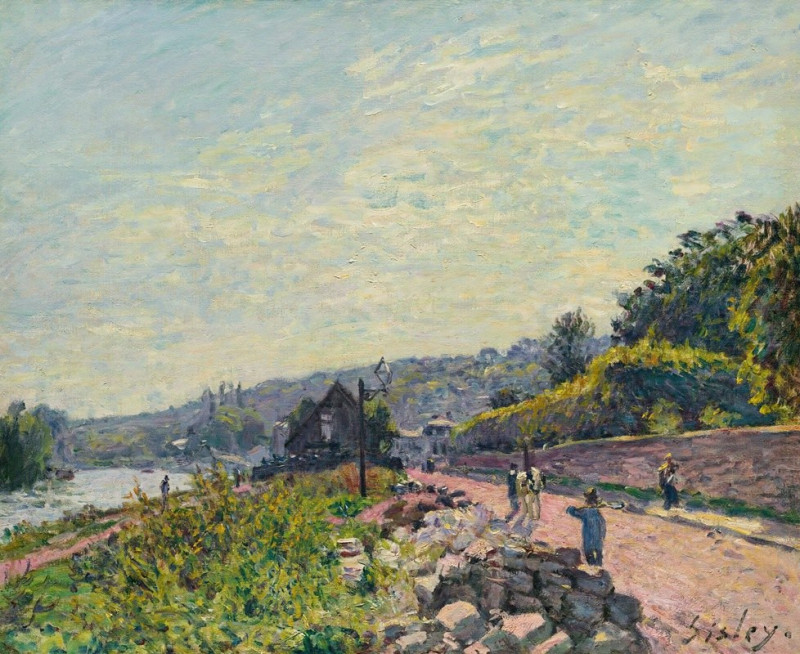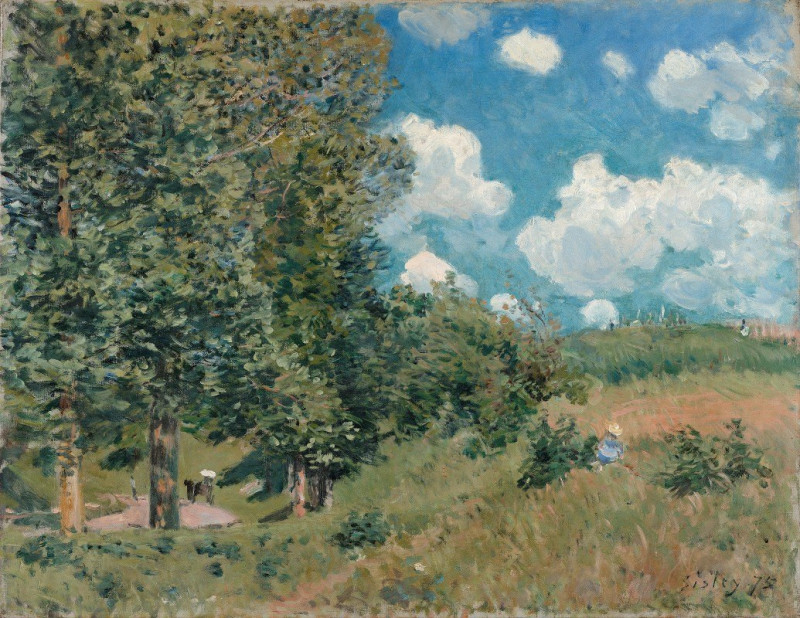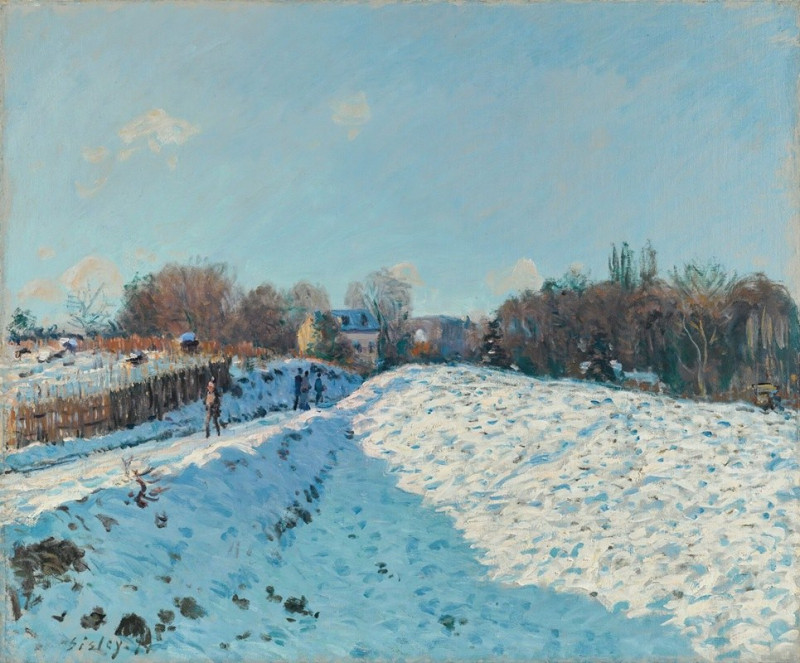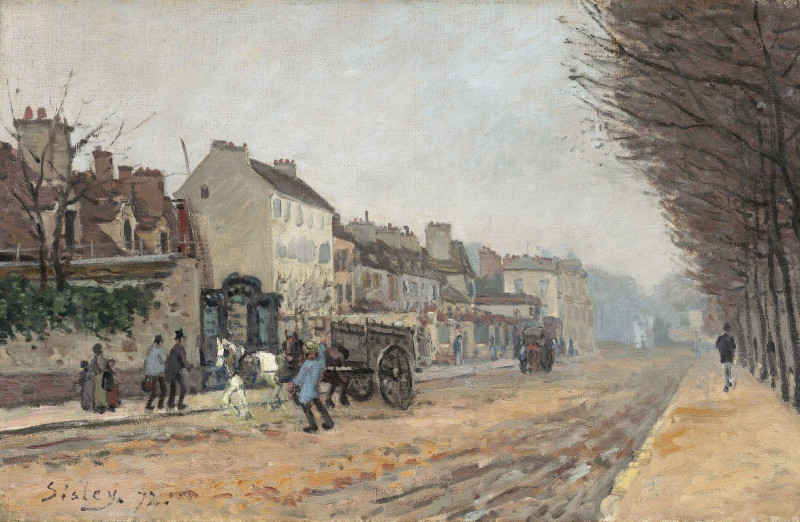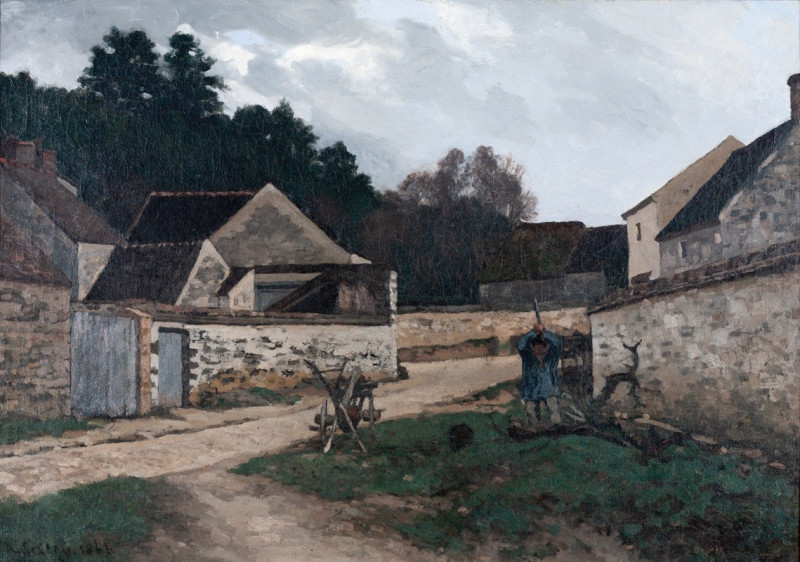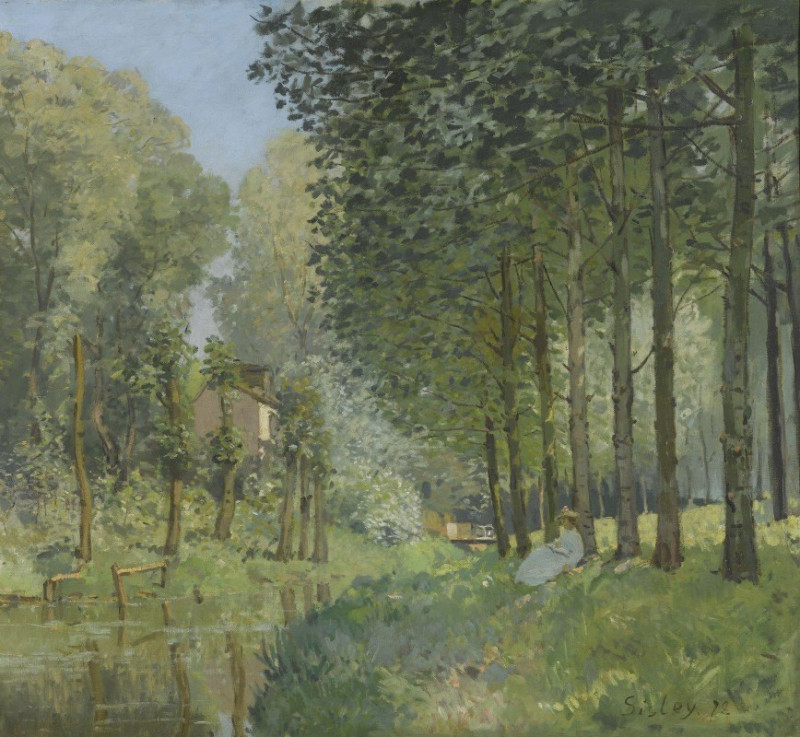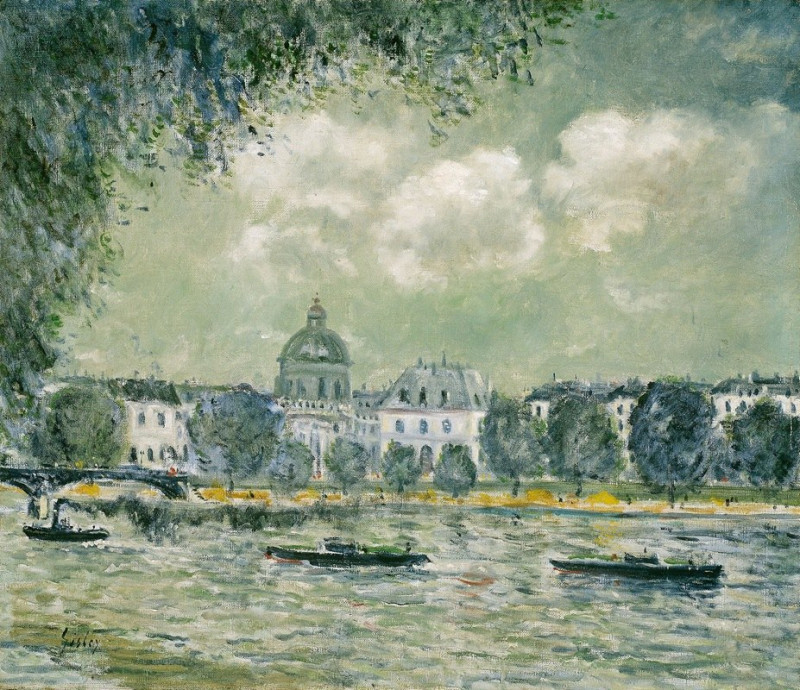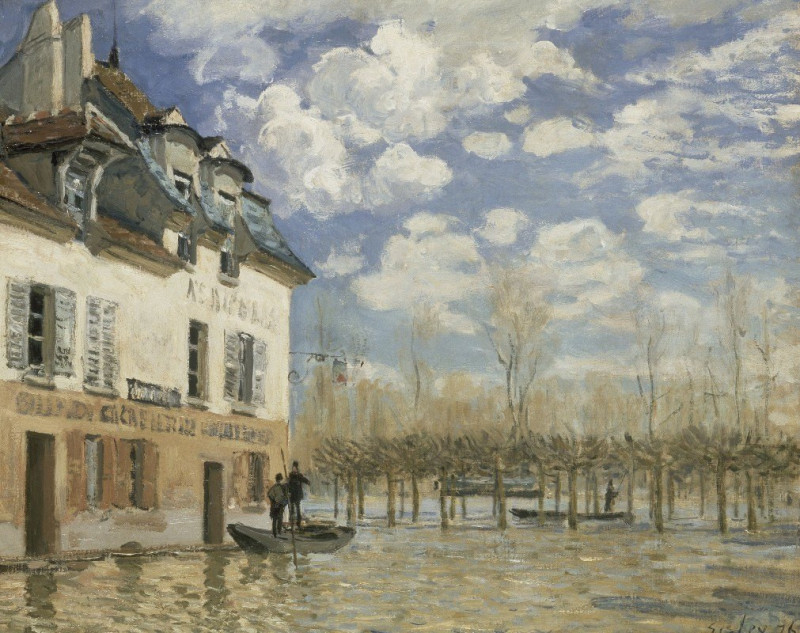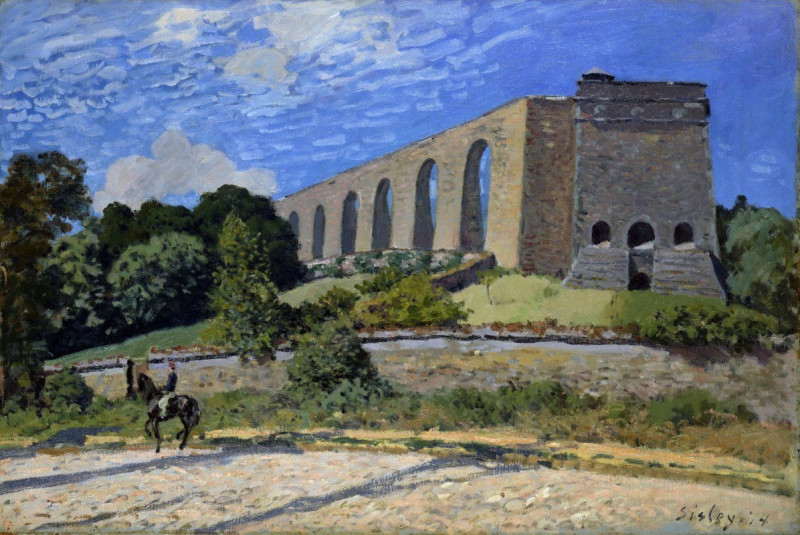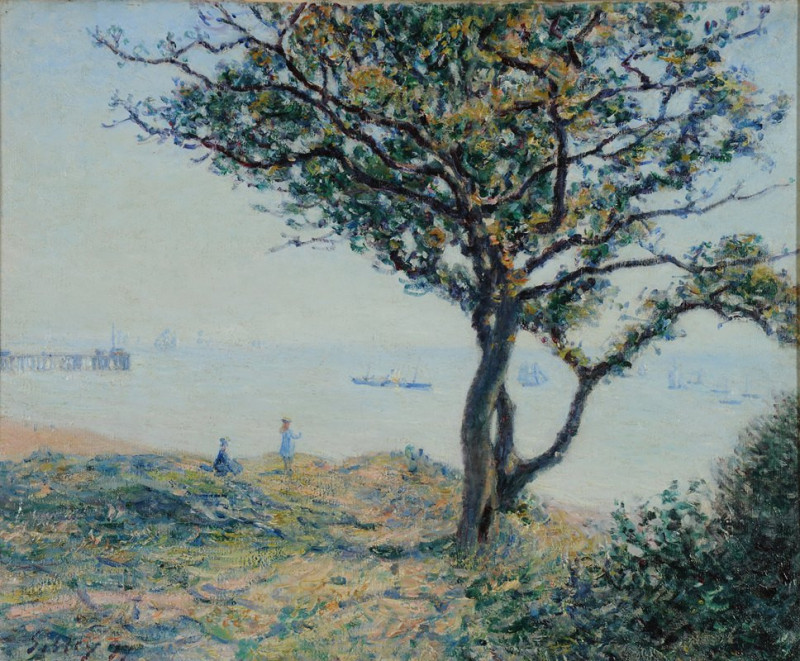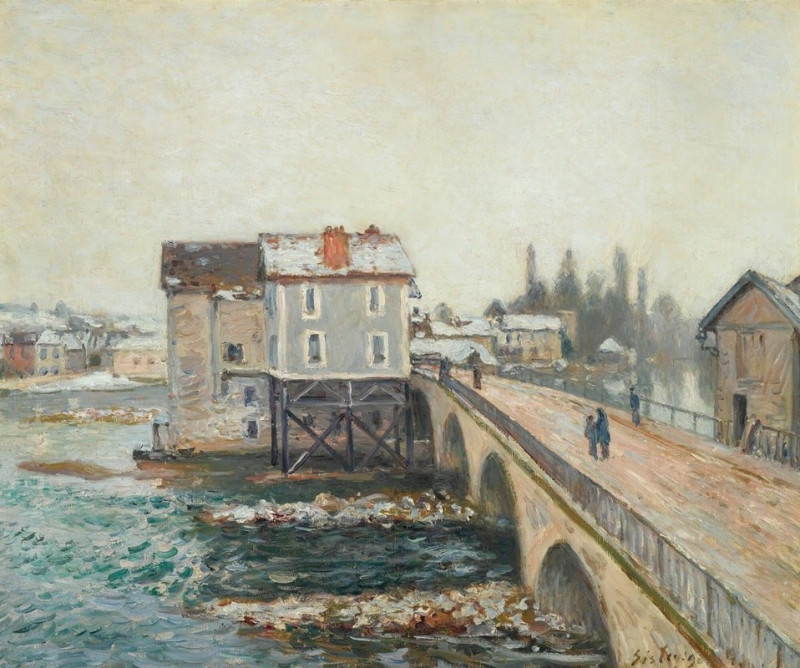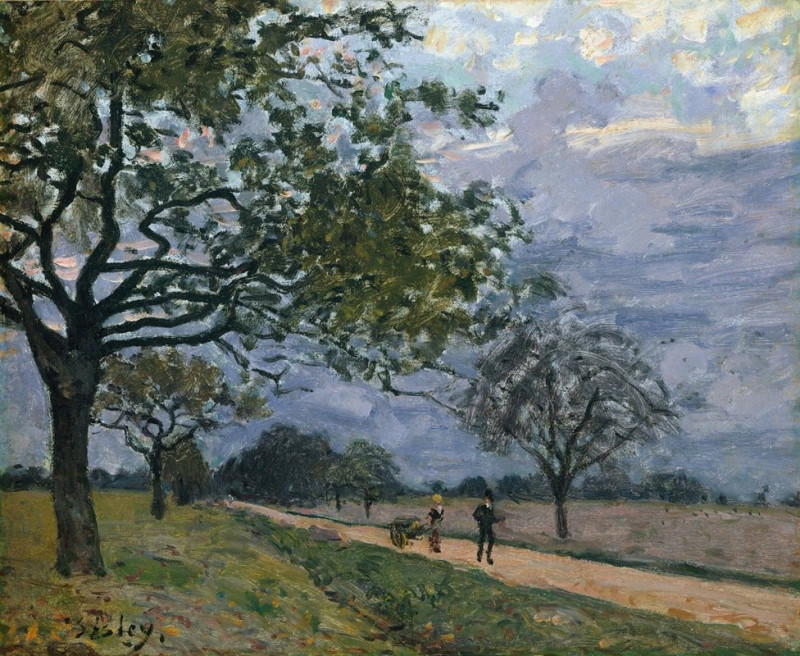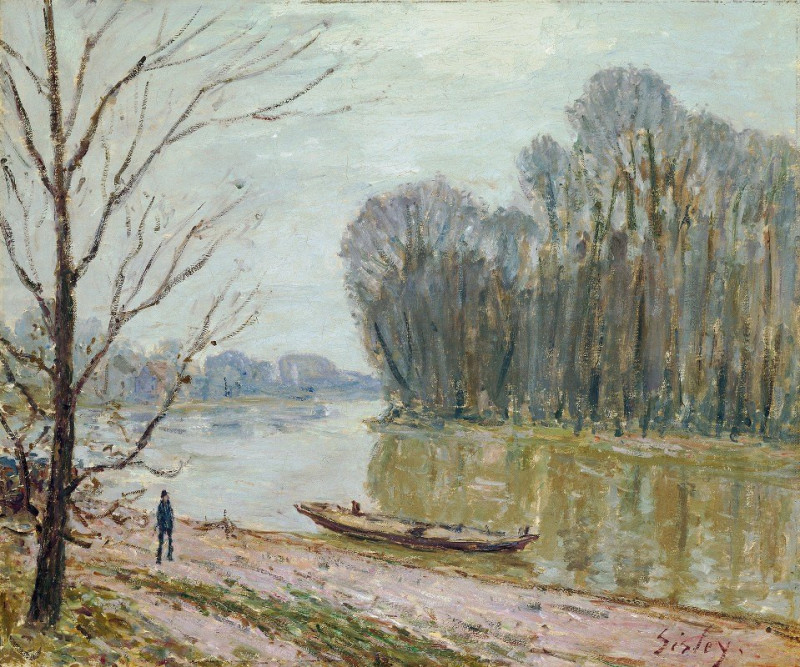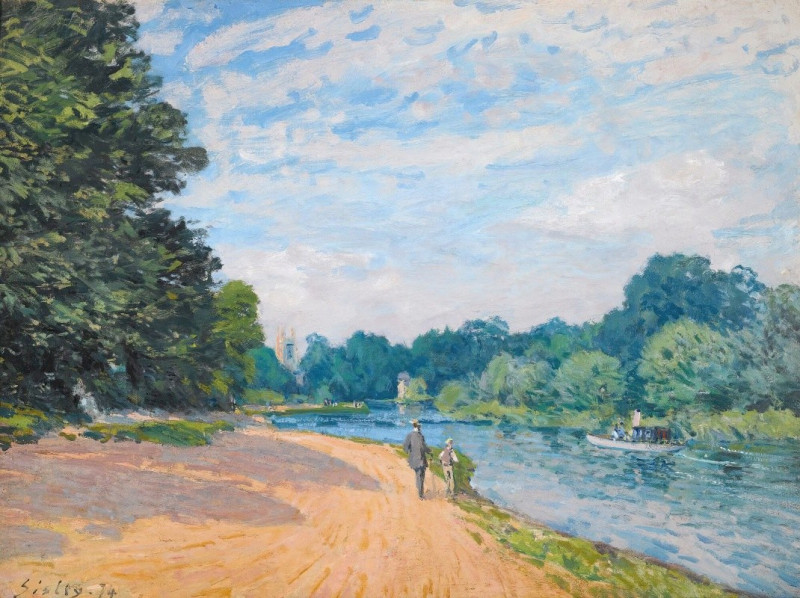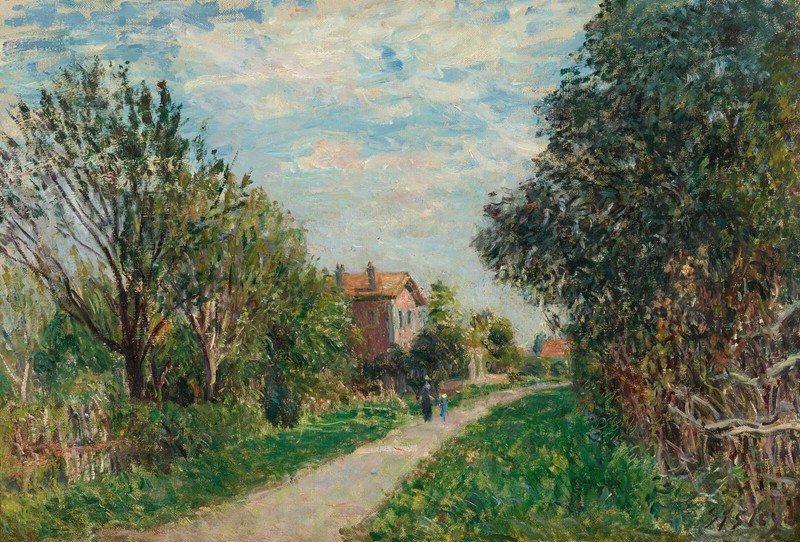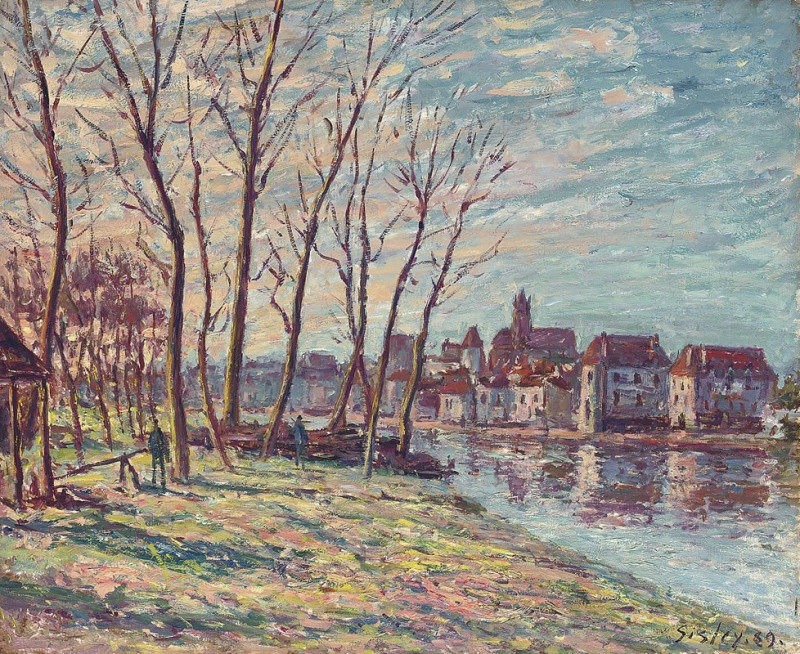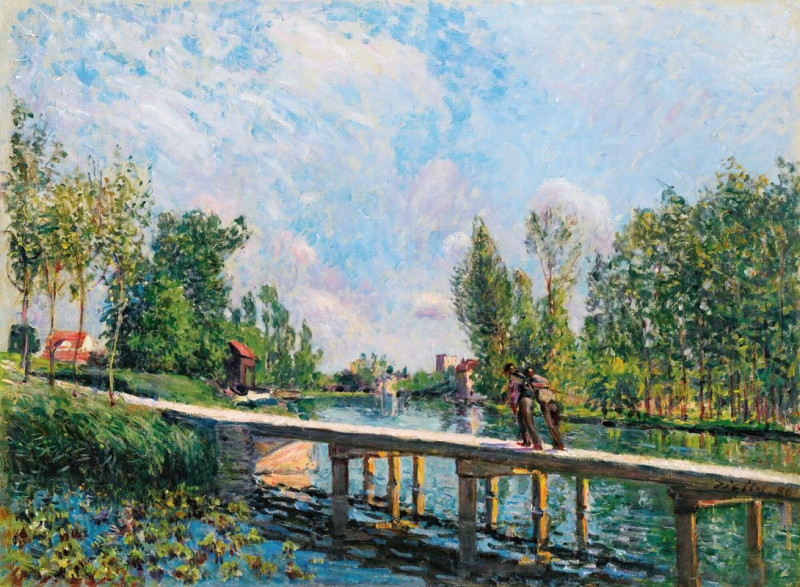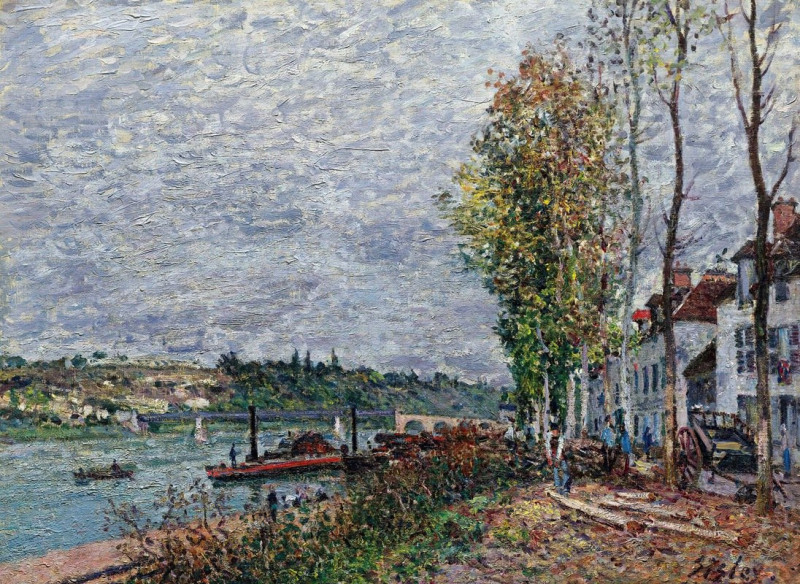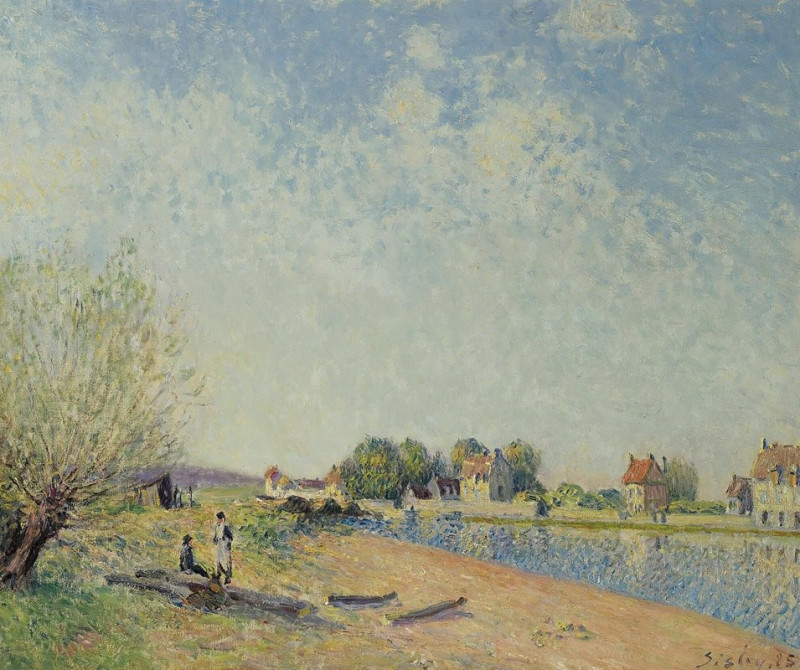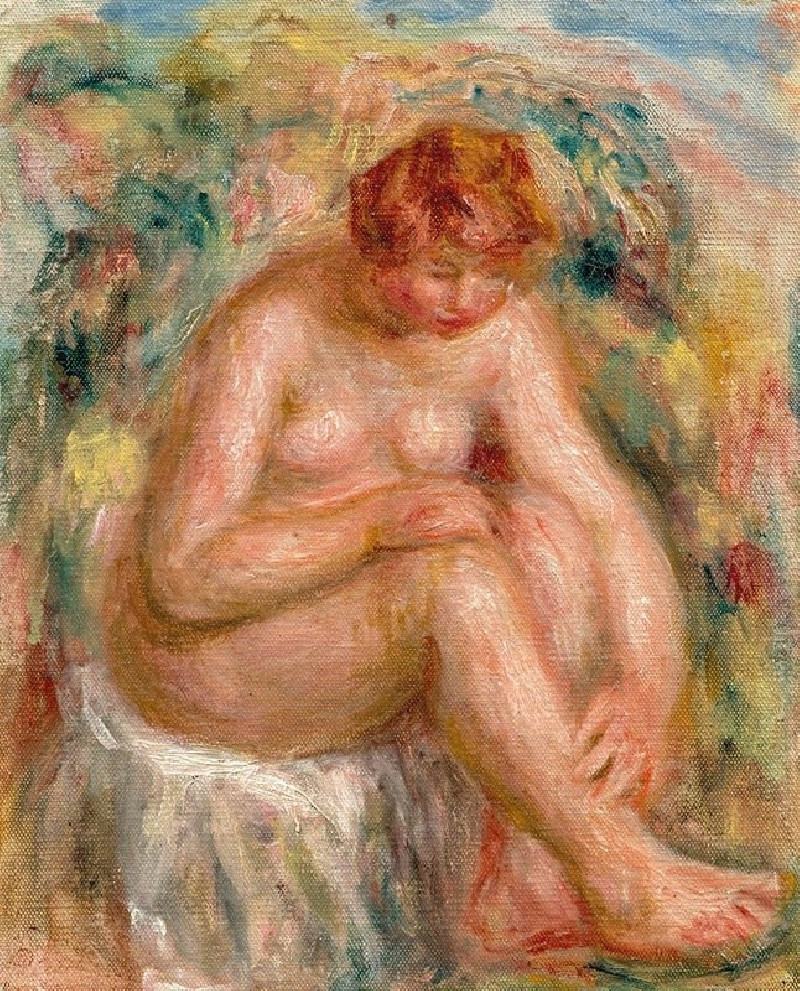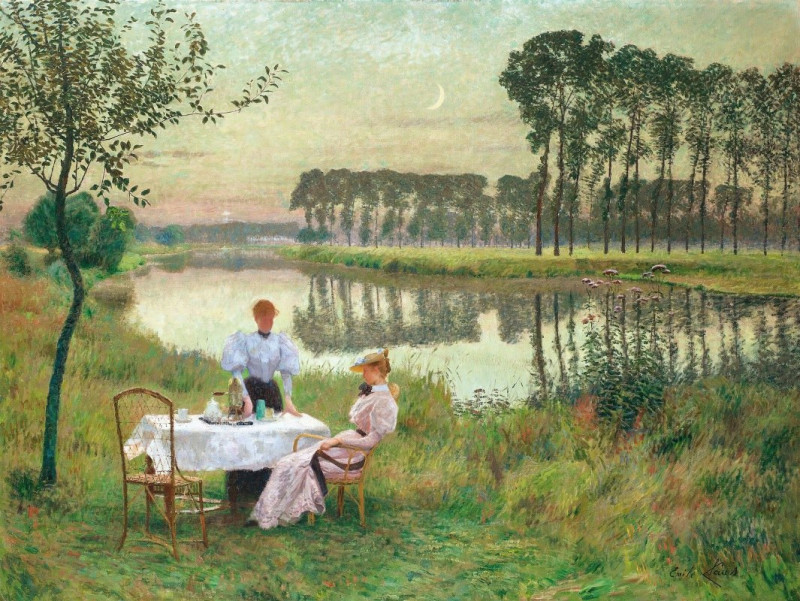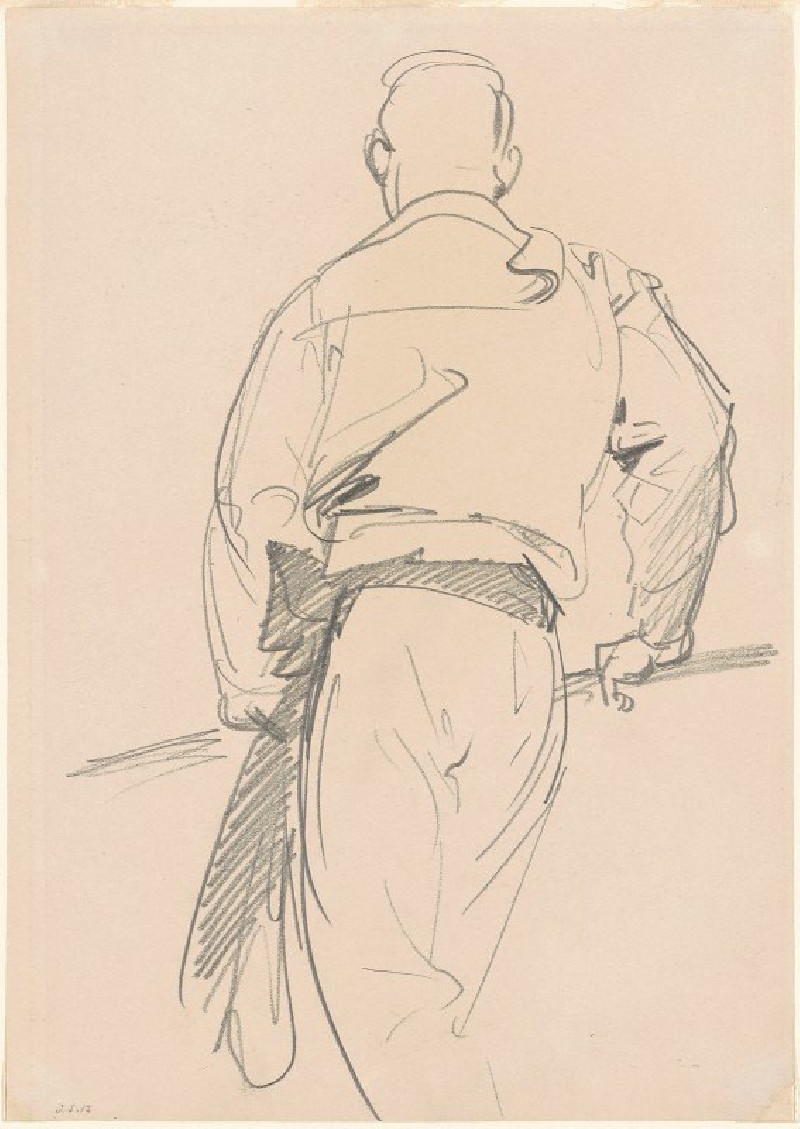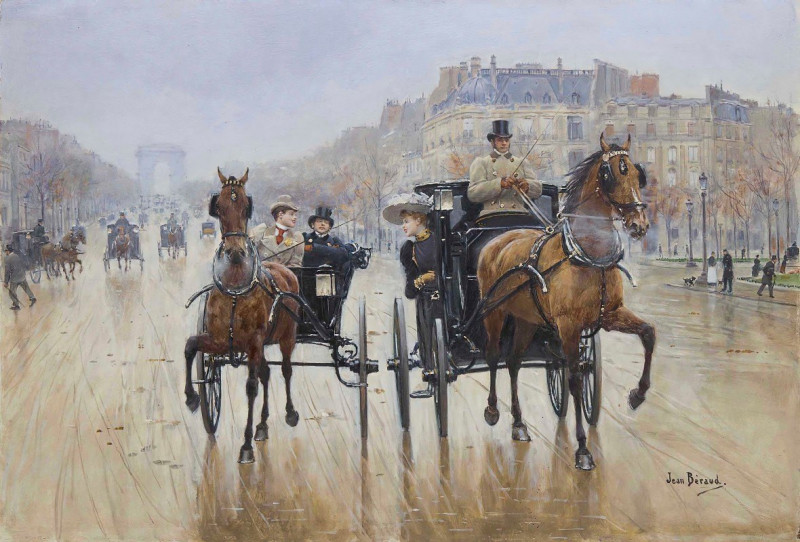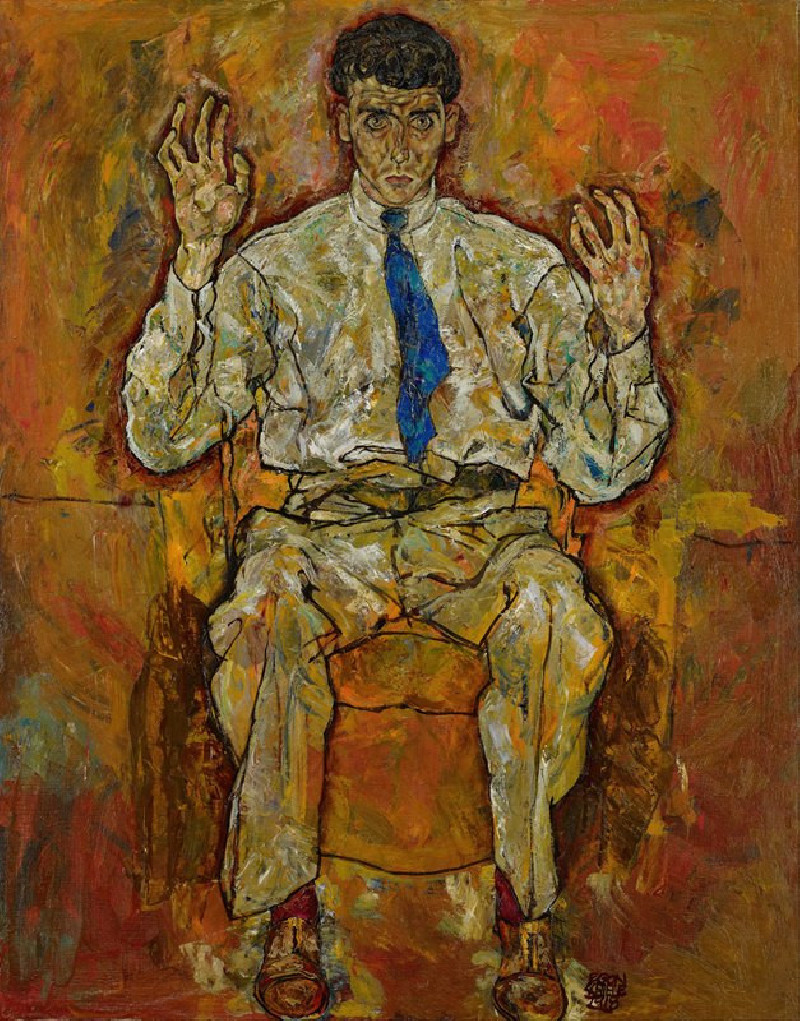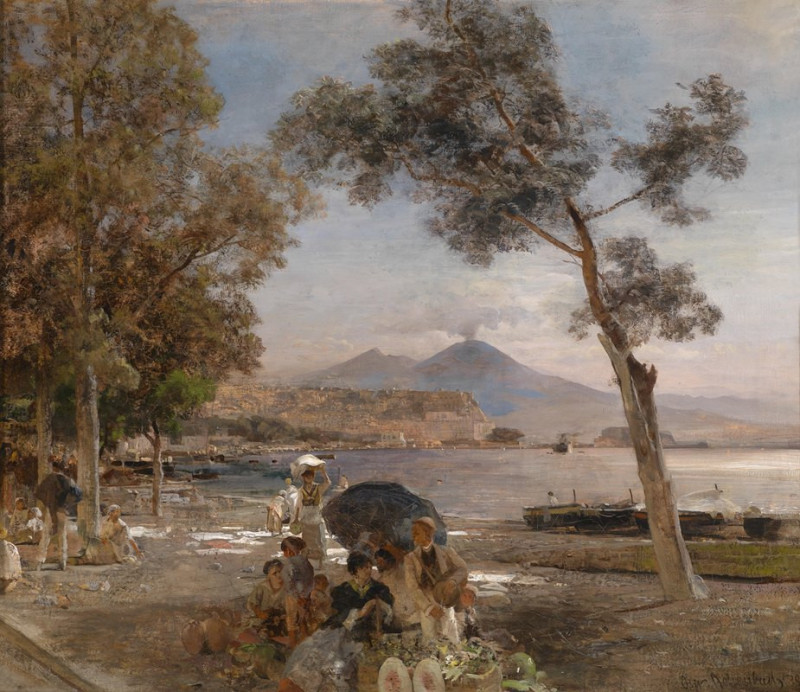Le remorqueur, le Loing à Saint-Mammès (1883)
Technique: Giclée quality print
Recommended by our customers
More about this artwork
"Le remorqueur, le Loing à Saint-Mammès" (1883) by Alfred Sisley encapsulates the serene yet dynamic essence of the French riverside at Saint-Mammès where the Loing joins the Seine. This evocative landscape reflects Sisley's passion for the subtle interplay of light and nature, and his attachment to the tranquil scenes of rural France.The composition arrests a moment along the bustling banks of the Loing, featuring a tugboat at work, its smoke mingling with the cloud-dappled sky. The scene is animated yet peaceful, illustrating the harmonious coexistence of man and nature. The foreground displays a ruggedly textured path covered with leaves, suggesting the autumn season, while figures stroll leisurely beside the leafy border that veils the quaint houses of the village.Sisley's use of loose and fluid brushstrokes captures the fleeting effect of sunlight and its reflections on the water, enveloping the scene in a luminous atmosphere that is quintessentially Impressionistic. His palette of earthy tones punctuated by the darker hues of the boat and its smoke trail conveys a sense of the ephemeral beauty of everyday moments.This painting not only highlights Sisley’s masterful ability to document natural light and color but also serves as a poignant reminder of the serene landscapes that have now been marked by the passage of time.
Delivery
Returns
Alfred Sisley (1839–1899), an English impressionist artist, was renowned for his breathtaking impressionist landscape paintings. Born in 1839 to a wealthy family in Paris, Sisley spent most of his life in France. Despite being intended for a career in commerce, he rebelled and pursued his passion for painting as an amateur in the studio of Charles Gleyre, where he befriended artists Claude Monet and Pierre-Auguste Renoir. The financial loss of his family in the Franco-German War led Sisley to make a career out of his art, though it left him financially distressed. It wasn't until after his passing in 1899 that the true value of his work was recognized.



